
AIR HANDLING UNITS (AHU’S)
An air handling unit (AHU) is the composition of elements mounted in large, accessible box-shaped units called modules, which house the appropriate ventilation requirements for purifying, air-conditioning or renewing the indoor air in a building or premises. It collects outdoor air and room air, removes dust and other particles from the collected air, adjusts the temperature and humidity, and distributes the conditioned air through ductwork to different areas of the building.
An air handling unit (AHU) is a device used to regulate and circulate air as part of a heating, ventilating, and air-conditioning (HVAC) system. It is usually a large metal box that contains a blower, heating or cooling elements, filter racks or chambers, sound attenuators, and dampers. It can be installed on a rooftop or along an external building wall. It collects outdoor air and room air, filters the air, adjusts the temperature and humidity, and distributes the conditioned air through ductwork to different areas of the building
An air handling unit (AHU) is a device used to regulate and circulate air as part of a heating, ventilating, and air-conditioning (HVAC) system. It is usually a large metal box that contains a blower, heating or cooling elements, filter racks or chambers, sound attenuators, and dampers. It can be installed on a rooftop or along an external building wall. It collects outdoor air and room air, filters the air, adjusts the temperature and humidity, and distributes the conditioned air through ductwork to different areas of the building

FLOOR MOUNTED AHU
A Floor Mounted Air Handling Unit is used to condition and circulate air as part of a heating, ventilating, and air-conditioning system. It is usually a large metal box containing a blower, heating or cooling element. These units are preferred when floor space is at a premium as they occupy less floor space. They are foot mounted or stationed on the base frame and rest either on foundation or floor.
- Available in different sorts of configuration.
- Available in both single as well as double construction.
- Large metal box containing a blower, heating or cooling element.
- Environmentally-friendly and have an energy recovery system with high efficiency available for every configuration.
- Clean surfaces and easy to clean .
Floor Mounted Air Handling Units are available in different sorts of configuration and have a longer shelf life. They are available in both single as well as double construction. They are rust-free too. These units are usually a large metal box containing a blower, heating or cooling element. They are easy to use and have high durability. They are also environmentally-friendly and have an energy recovery system with high efficiency available for every configuration.

CEILING SUSPENDED AHU
A ceiling suspended air handling unit (AHU) is a type of air handling unit that is suspended from the ceiling. It is designed to provide efficient and reliable performance, ensuring that your environment stays comfortable and healthy. Ceiling suspended AHUs are perfect for managing the airflow in your space. They are comprised of modular constructions configured from DIDW centrifugal Fan with single or three phase motor Sectional - for Ease of Installation
- Space saver, saves valuable floor space
- Eliminate hotspots & air distribution issues
- High cooling performance
- Energy efficient
Ceiling suspended AHUs are available in a range of sizes and configurations to suit your specific needs. They are designed to provide excellent indoor air quality while minimizing energy consumption, helping you save on energy costs .
Air handling units (AHUs) are used in HVAC systems to regulate and circulate air throughout a building. They are designed to provide efficient and reliable performance, ensuring that your environment stays comfortable and healthy. Ceiling suspended AHUs are perfect for managing the airflow in your space. They are comprised of modular constructions configured from DIDW centrifugal Fan with single or three phase motor Sectional - for Ease of Installation.

VERTICAL AHU
A vertical air handling unit (AHU) is a device used to regulate and circulate air as part of a heating, ventilating, and air-conditioning (HVAC) system. It is designed to provide an efficient and cost-effective solution for spaces where floor space is limited. Vertical units require less floor space and are usually smaller so that the height of the coil section plus the fan section and the height of the ductwork that crosses over the AHU under the ceiling is less than the headroom (the height from the floor to the ceiling or the beam of the fan room)
- They are designed to provide an efficient and cost-effective solution for spaces where floor space is limited
- They require less floor space and are usually smaller so that the height of the coil section plus the fan section and the height of the ductwork that crosses over the AHU under the ceiling is less than the headroom
- They can be configured to suit either an up-flow or downflow orientation
- They can be customized to meet different kinds of applications
They are designed to provide an efficient and cost-effective solution for spaces where floor space is limited. They require less floor space and are usually smaller so that the height of the coil section plus the fan section and the height of the ductwork that crosses over the AHU under the ceiling is less than the headroom.
VAHUs are a versatile and efficient type of air handling unit that can be used in a variety of commercial and industrial applications. Their small size, low noise levels, and high efficiency make them a good choice for space-limited and noise-sensitive applications.
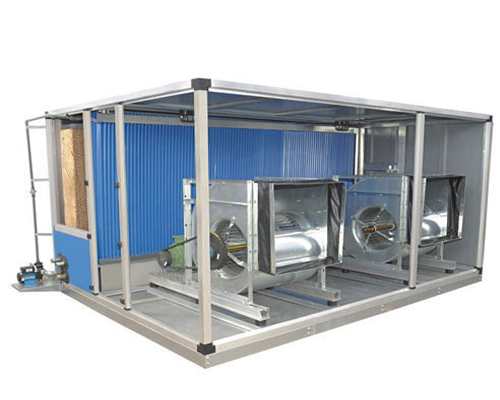
AIR WASHER UNIT
An air washer unit is a device that enhances the efficiency of your Air Handling Units. It cleans the air supply with relatively low airside pressure drop. The Air Washer Unit employs a highly efficient cellulose pad, as high as 95%, for direct evaporative cooling. Typically, water droplets are brought into direct contact with the air, resulting in the exchange of heat and mass (moisture) from the air to the water droplets.
- An air washer typically has a water tank that holds the water used for washing the air. The tank size can vary depending on the size of the unit.
- An air washer may have a built-in air filter that captures larger particles before the air passes through the water.
- An air washer cools and humidifies the air by bringing water droplets into direct contact with the air.
- Air washers come with multiple speed settings that allow you to adjust the fan speed according to your needs
Air washer units are rapid in providing heating and cooling, that is they are best fit for spaces that are not used continuously (such as schools and mosques). Further, in residential buildings, the system does not require it to remain functioning when the occupants leave, which reduces energy consumption. An Air Washer Unit comes in handy because it not only adds therapeutic moisture to the air but also removes any dirt, dust, pollution, or allergens from it. It is environmentally friendly as it does not contain any chemicals in it. The appliance itself is quite cost-efficient in comparison to other air conditioning units. So, you can save a lot while still getting the desired results
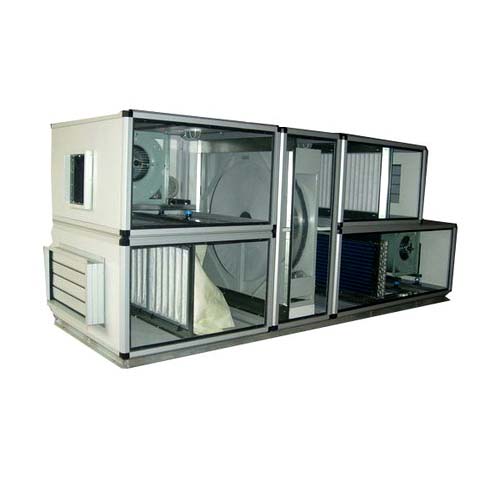
HEAT RECOVERY WHEEL UNIT (HRW UNIT )
A Heat Recovery Wheel Unit (HRW Unit) is a type of energy recovery heat exchanger positioned within the supply and exhaust air streams of air-handling units or rooftop units or in the exhaust gases of an industrial process, in order to recover the heat energy. The heat recovery wheel works by capturing the heat energy from the outgoing air stream as it passes through the heat-absorbing material. The wheel then rotates and transfers this heat energy to the incoming air stream as it passes through the same material in the opposite direction
- HRW Unit is commonly used in HVAC (Heating, Ventilation, and Air Conditioning) systems to recover and reuse the heat energy that would otherwise be lost to the environment
- HRW Unit is used in air-to-air high temperature waste heat recovery
- HRW Unit is used in the supply and exhaust air streams of air-handling units or rooftop units or in the exhaust gases of an industrial process
The HRW Unit is also called as Energy Recovery Wheel/Enthalpy wheel/Thermal Wheel/Rotary Heat Exchanger. It is attached with fresh air handling unit or AHU so that it is divided into two half-moon section. When the enthalpy wheel is rotating, stale exhaust air (return air 24 °C) drawn through on half of wheel from building and outdoor air (fresh air 46 °C) passed through the other in a counter flow pattern
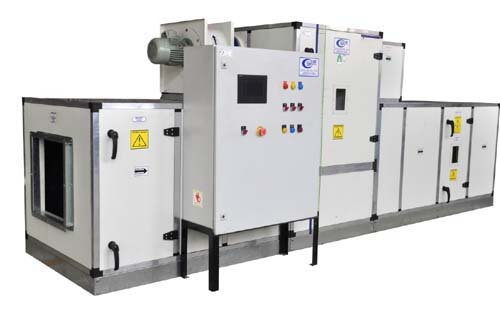
AIR HANDLING SYSTEM WITH DEHUMIDIFIER
An air handling system with dehumidifier is a type of HVAC system that includes cooling equipment with controls to operate in dehumidification mode. It is designed to maintain indoor relative humidity (RH) at or below 60% in warm-humid climates. A supplemental dehumidifier is integrated with the home’s HVAC air handler to provide extra dehumidification when needed
- Air handling systems with dehumidifiers are used in warm-humid climates to maintain indoor relative humidity (RH) at or below 60%
- Dehumidified air feels cooler and drier, which can be more comfortable in hot, humid climates.
- Condensation can cause damage to building materials and furnishings, as well as create a breeding ground for mold and mildew. Dehumidifiers can help to prevent condensation by removing moisture from the air.
- Dehumidifiers can help to extend the life of equipment by preventing corrosion and rust.
The Air Handling System with an inbuilt Dehumidifier is a new, improved and compact solution introduced by Airpac in 1998 for the pharmaceutical industry in India. Today, this solution is commonly known as ACDs (AHU cum Dehumidifier) or an Engineered Dehumidifier
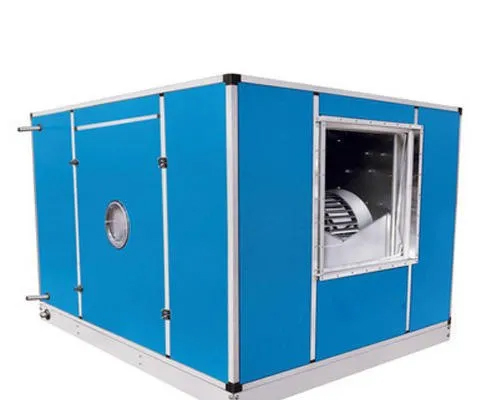
VENTILATION UNIT
A ventilation unit is a device that provides fresh air to a building or other enclosed space. It can be either mechanical or natural. Mechanical ventilation units use fans to move air, while natural ventilation units rely on the movement of air caused by differences in temperature or pressure.
- Improve indoor air quality by removing pollutants and contaminants from the air
- Provide fresh air to occupants, which can help to improve their health and productivity
- Reduce the risk of mold and mildew growth
- Control the temperature and humidity of a space
- Provide a means of escape in the event of a fire or other emergency
Ventilation units are an important part of any building's HVAC system. By providing fresh air and removing pollutants, they can help to improve the health and productivity of occupants and reduce the risk of mold and mildew growth.
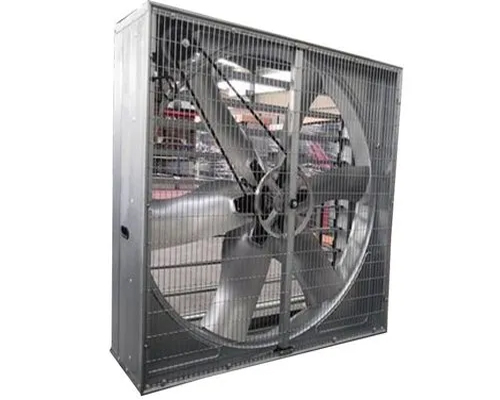
EXHAUST UNIT
An exhaust unit is a device that removes harmful gases and particulate matter from the air. It is typically used in industrial settings, but can also be found in some commercial and residential applications. Exhaust units work by drawing in contaminated air and passing it through a series of filters. The filters remove the harmful contaminants, and the clean air is then exhausted back into the environment.
- Exhaust units can help to remove harmful pollutants from the air, such as dust, fumes, and smoke. This can improve air quality and reduce the risk of respiratory problems
- Exhaust units can help to remove flammable gases from the air, which can reduce the risk of fires and explosions.
- Workers who are exposed to poor air quality are more likely to experience health problems, such as headaches, nausea, and fatigue. This can lead to decreased productivity and increased absenteeism.
- Employees who work in a healthy environment are more likely to be happy and productive. This can lead to improved morale and increased job satisfaction.
Exhaust units are an important part of air quality control. They help to protect workers and the public from exposure to harmful pollutants. Exhaust units can also help to reduce the risk of fires and explosions by removing flammable gases from the air.
